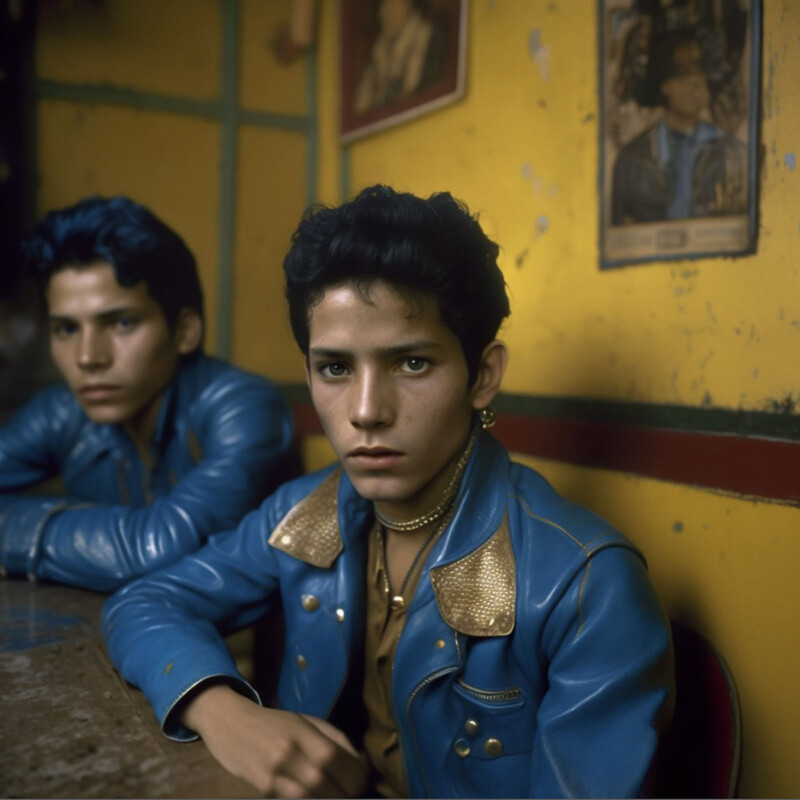The Getty Museum Purchased Its First AI Photograph

Queer Costa Rican photographer Matías Sauter Morera breaks through barriers as the first artist to sell an AI-generated photograph to the Getty Museum.
The piece, Cristian en el Amor de Calle (2024), portrays two young Latino men in a cafe or bar. The men stare into the “camera” with an intense look, as if directly into the soul of the viewer. Their attire is particularly notable: flashy blue leather jackets with contrasting gold embellishments. The aesthetics are no mistake; they nod to history in the 1970s Costa Rica when queer cowboys from the Guanacaste Coast became known as “pegamachos.”


Recreating the Life of Pegamachos
The pegamachos live an undercover lifestyle of hidden romance, so anonymity is essential to their safety. This concern for protection led Morera to use artificial intelligence to create his work. He didn’t want to show real people’s identities and put them at risk.
“AI provided a way also to achieve this without intruding on real lives or placing real Costa Rican faces that people of the community might recognize,” Morera told artnet. “Since the pegamachos culture remains hidden, these AI images serve as a mimicry of photography, a fiction, and a medium through which I can imagine and construct an imagined parallel history.”
The artist combined multiple artificial intelligence models and Photoshop to envision the AI-generated pegamacho subjects in realistic scenarios. He created a parallel history to reality without censorship or risk to the lives of any individuals. Each image took hundreds of commands and months of work to perfect.
Morera’s work was first introduced to the Los Angeles art scene through an exhibition last year at the Craig Kroll Gallery. There, the Getty Museum saw the work and immediately noted its breakthrough innovation and cultural significance.

Photographic Mimicry
It’s also significant to mention that Matías Sauter Morera, a prolific and talented photographer, does not consider these specific works to be photographs. While the Getty Museum acquired them through its photography curator, Morera characterizes the pieces as distinct from his traditional photography. He views them as a unique creative medium that mimics photography.
Upcoming Exhibitions
The Craig Kroll Gallery will be hosting a solo exhibition of Pegamachos selected by curator Paul Martineau from March 22 through May 3, 2025. Shortly after, the works will be on view as part of the The Queer Lens: A History of Photography show at the Getty Center in Los Angeles. This show runs from June 17 through September 28, 2025.
Image credits: Images courtesy of Matías Sauter Morera, Craig Kroll Gallery